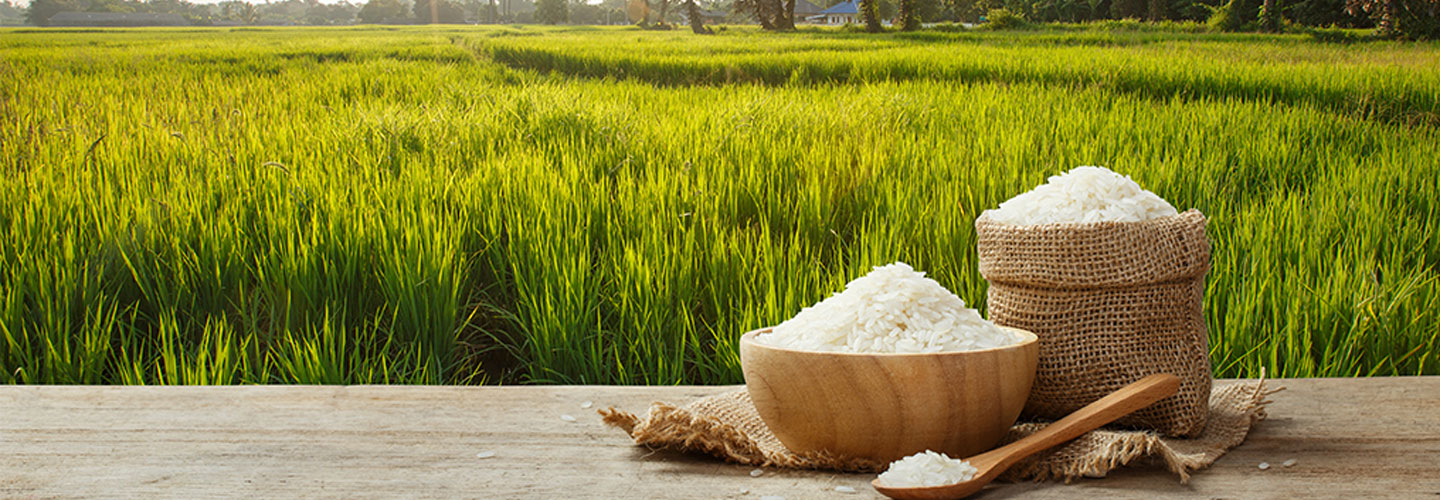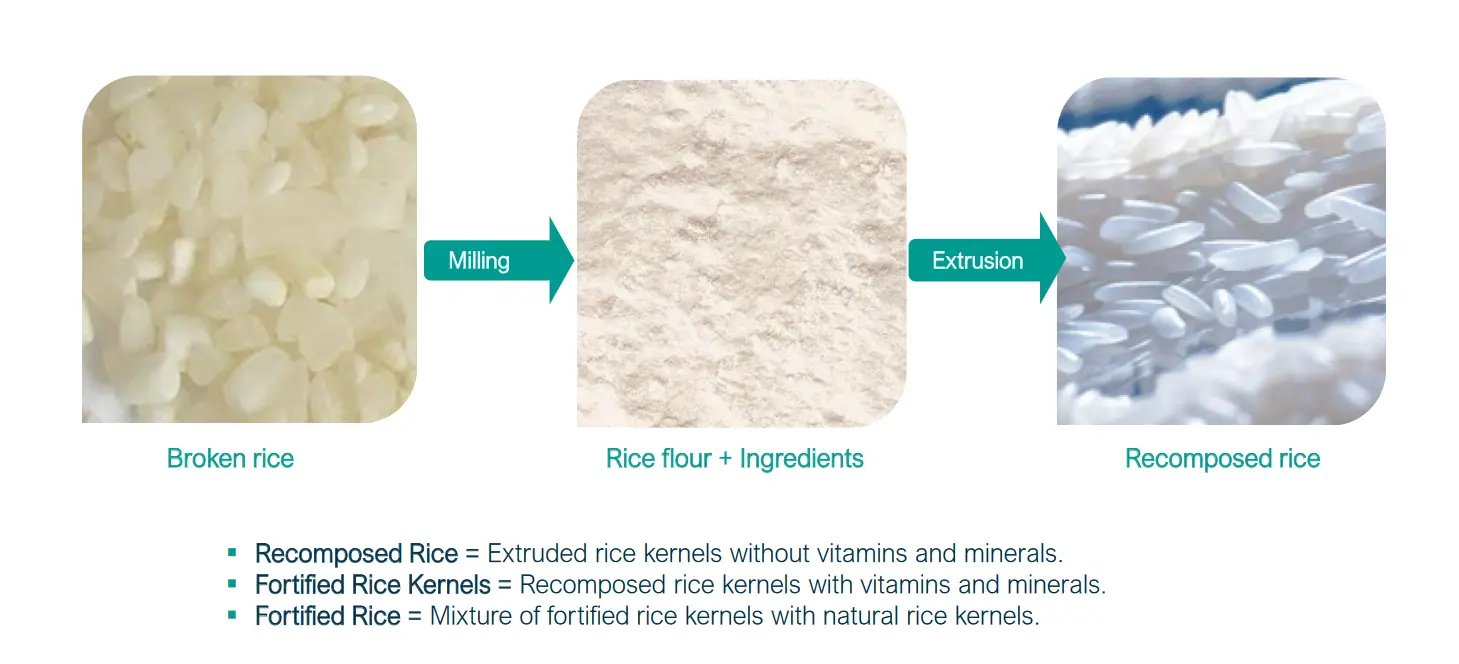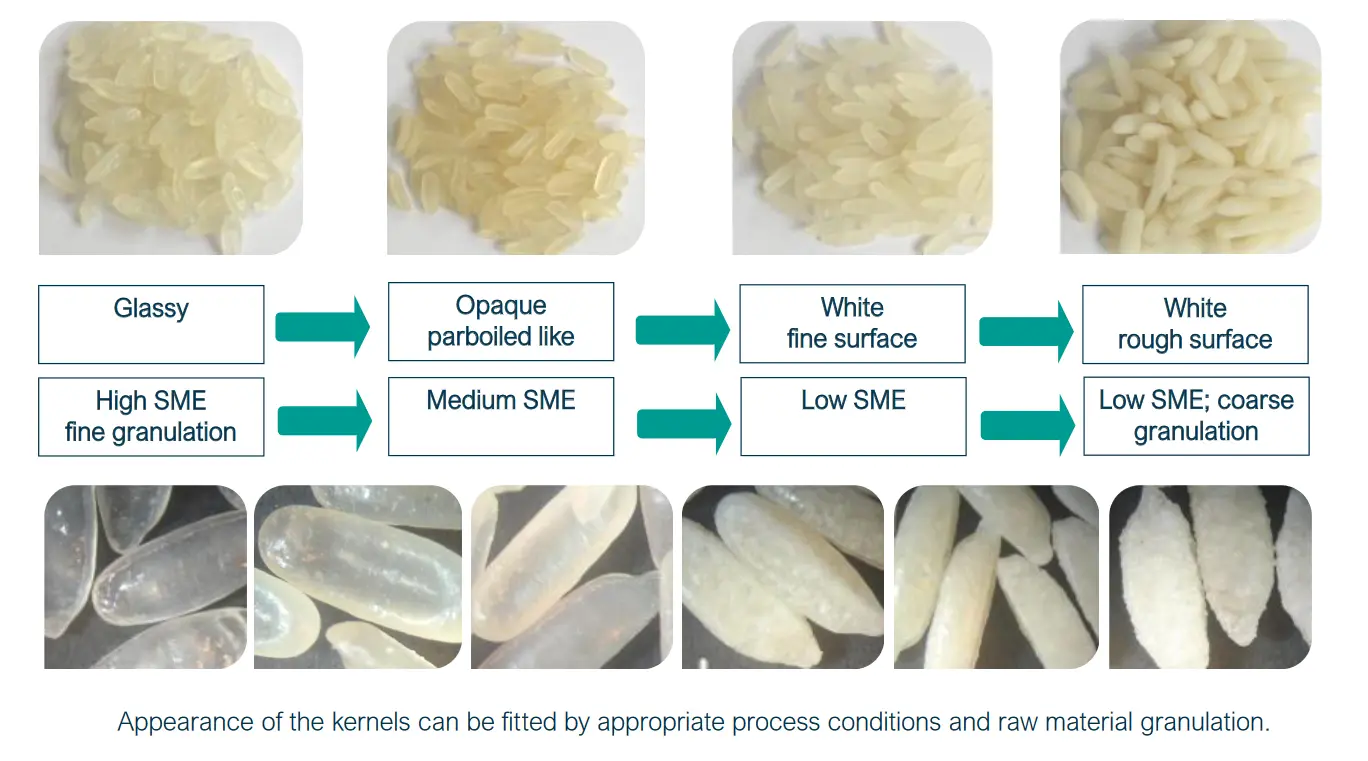
What is Fortified Rice Kernel (FRK)?
Fortified Rice Kernel (FRK) is a reconstituted rice grain made from rice flour, vitamins, and minerals using hot extrusion technology. This process is relatively simple and comprises the following five steps:
- 1. Mixing of raw material
- 2. Passing raw material through extrusion process
- 3. Drying of finished product
- 4. Storage
- 5. Packaging
1. Mixing of raw material: FRK is a reconstituted rice grain made from rice flour, vitamins, and minerals. Rice flour, vitamins and minerals that form raw material for producing FRK along with specified additives are blended/ mixed together in appropriate proportions and the mixture is hydrated (using water treated by Reverse Osmosis process) for getting prescribed moisture content.
2. Extrusion: This uniformly hydrated mixture of raw material with agreed moisture content is passed through a twin-screw extruder where it takes the shape of tiny pellets resembling regular rice grains.
3. Drying: The next step in the production of FRK is slow drying at low temperature. This is done to bring down moisture to a safe level and production of high-quality FRK.
4. Storage: After the drying process is completed, the finished product (FRK) is stored in an intermediary storage bin before packing.
5. Packaging: FRK is packed in a special two-layer bag with inner poly lining (20/25/50 Kg bag depending on need). These bags are made up of two different layers to protect rice from moisture and rodents. The inner poly lining of this bag is made up of good quality food grade material.
A breakthrough in rice fortification
Welcome to the world of fortified rice - a nutritional powerhouse that's transforming the way we tackle malnutrition and promote better health worldwide.
Fortified rice is not your ordinary staple. It's a game-changer, packed with essential vitamins and minerals that are crucial for our well-being. But what exactly is fortified rice? Simply put, it's rice that has been enriched with key nutrients like iron, zinc, folic acid, and vitamins such as vitamin A, B1, B3, B9, and more.
So, why fortify rice? The answer lies in its incredible potential to address widespread malnutrition, particularly in countries like India and other developing nations where rice is a dietary staple. Malnutrition remains a pressing issue, with millions of people lacking access to essential nutrients due to factors like poverty, limited food diversity, and inadequate healthcare.
Fortified rice offers a simple yet effective solution. By fortifying rice with essential nutrients, we can bridge the nutritional gap and ensure that everyone has access to the vitamins and minerals they need for optimal health. This is especially crucial for vulnerable populations such as pregnant women, young children, and the elderly, who are most at risk of nutrient deficiencies.
In India, where rice consumption is ubiquitous, fortified rice has the potential to make a significant impact on public health. By incorporating fortified rice into diets, we can combat widespread micronutrient deficiencies, prevent birth defects, support cognitive development in children, and promote overall well-being.
But the benefits of fortified rice extend beyond India's borders. In other developing countries facing similar nutrition challenges, fortified rice offers a cost-effective, scalable solution to improve nutrition outcomes and break the cycle of poverty and malnutrition.
In essence, fortified rice is more than just food - it's a powerful tool for social change and a symbol of our commitment to building a healthier, more equitable world for all. Join us on this journey as we explore the wonders of fortified rice and its transformative potential in the fight against malnutrition.
Idea of recomposed and fortified rice

Appearance of recomposed rice

